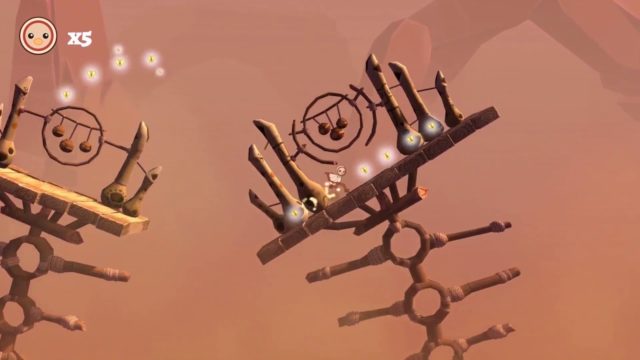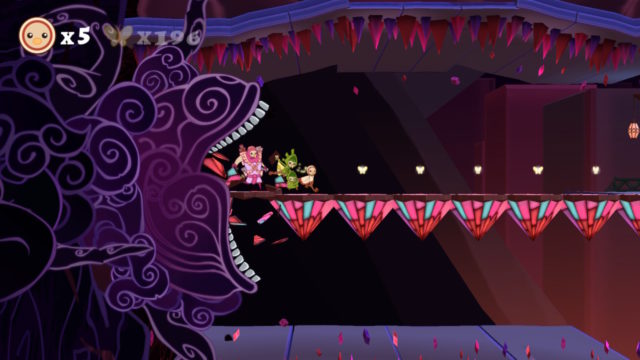Beautiful hand-drawn graphics; platforming that is deceptively complex; clever villager ability system
Plot could be better developed; some imbalance between levels; collection system doesn’t do much to impact gameplay
Shu is a simple name for a game that, on its face, is a simple game. With almost no explanation, this platformer drops you in the remnants of a village, your only explanation a series of images that suggest that a terrible evil has befallen your people. No in-game elaboration is given on the nature of the evil or the history or mythology of the village or even the world at large. In the balance between leaving things to the imagination and going overboard on description, the game comes very close to going too far on the former. But where Shu doesn’t always tell as much as one might like, it makes up for it with a game that is rich in gameplay and production values… and is a lot more complex than it might first appear.
Shu, a multiplatform title on Nintendo’s eShop, is the story of the title character, a solitary soul with the single goal of rescuing the lost villagers and escaping the encroaching evil. Shu’s only abilities are running, jumping, and gliding, and players early on find themselves running through beautiful but quiet vistas, collecting stuff, hitting checkpoints, and trying to avoid death.

Death, too, is always close. Shu has no health bar. He is granted five lives, and each time he hits something dangerous or falls into the water, he dies and respawns at the last checkpoint. If all the lives are gone, it’s game over, with the player forced to start back at the beginning of the level. Since levels are fairly long, losing all five lives is a pretty frustrating event, especially if you’ve survived a terrible boss only to die during the lengthy post-boss sequence. And this happens: unlike most games, major bosses don’t always fall at the end of a level, and escaping death from a pervasive evil only to impale yourself on a bed of spikes makes for a most agonizing way to go.
The game, though, does offer a few proverbial life preservers. One are the checkpoints, which are sprinkled throughout each level. These checkpoints refill your life count back to five, so if you’ve missed that difficult jump several times and are on the cusp of death, hitting that checkpoint is like being given new hope all over again. Another help are the villagers you rescue. Each of them has some special ability, and those abilities augment what Shu can do, letting him reach inaccessible areas or protecting him from things that would otherwise be fatal. You may gain a few villagers at a time, but they never stay with you permanently. Watching them sail away to safety brings a mix of both happiness at their fate and loss at knowing their special talents are no longer available to you.
The platforming is not easy, but it does have the virtue of being refined. Jumps can be hard, especially when you’re trying to juggle making a landing while using villager abilities, but the controls are smooth and responsive and Shu almost always goes the way he should. Occasionally, the game penalizes you for failing to anticipate hazards you can’t see off-screen, but those moments are relatively few and with some care you can usually prepare.
The tensest parts of the game come when you’re racing away from some obstacle or evil. Shu is fast but not blazing fast, and racing from checkpoint to checkpoint with death mere pixels from you is a harrowing experience. These experiences can be some of the most frustrating of the game, but they can also be the most satisfying, especially when you finally eke out an escape.

Throughout the levels, there are a few different collectibles, but that part of the game, at least, was a bit of a letdown. You can collect butterflies and statues and other things, but their use in the game is limited. The butterflies, at least, do act as an informal hint system as to where to go next, but beyond that, the collectibles don’t serve much purpose other than setting a collection goal. It would have been nice if some of those, at least, would unlock new abilities or some other element to improve Shu.
Still, the game is deep enough as it is, and players who like platformers will find a lot to like here. From the gorgeous, simple visuals to the ever-changing platforming, Shu is an excellent example of what a small developer can do to push the genre forward. For that reason, this game is worth a look for platforming fans.
Nintendojo was provided a copy of this game for review by a third party, though that does not affect our recommendation. For every review, Nintendojo uses a standard criteria.




 ShareThis
ShareThis





